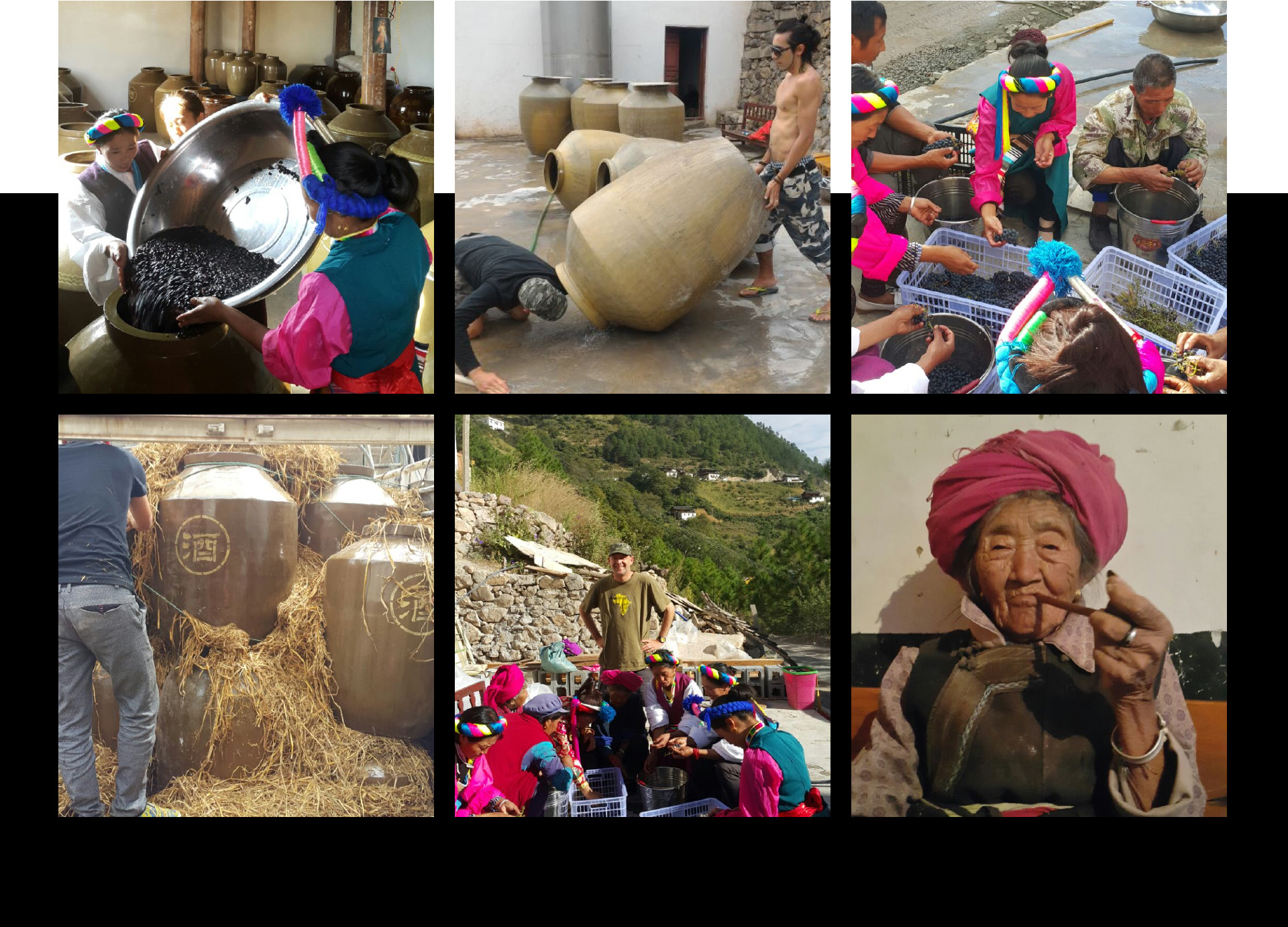My experience making wine in
Yunnan, China 2016
Harvest in Yunnan is not for the faint hearted. You must know how to get along with very little in terms of comforts and equipment in the cellar and vineyards. But then again, that is exactly how you learn to adapt and apply your knowledge and understanding of wine making without all the gimmicks and distractions. Making truly authentic wines. The essentials are there, terroir, good fruit, good labor, lots of traditional Baju pots, quality French oak barrels and of course skilled craftsmanship and a great passion for wine. The predominant cultures in the area is Cabernet and Merlot. You have to be creative and think out of the box to adjust to different situations arising considering the lack of easy access to supplies and equipment.
The temperatures throughout the harvest were between 21 and 25 degrees Celsius. During the last 5 days, we had some light rain, but it did not affect the grape quality. The ripening from bud to harvest is 160 days. What makes this area unique for wine making is the high altitude of the vineyards that are between 2300 m – 2700 m above sea level. The yield is low, less than 4 tons per hectare and the bunches are small. The terroir consists of clay and eroded slate. Vineyards are watered naturally with no irrigation systems in place. With the favorable climate, vineyards do not have to be buried in winter to protect from the cold and snow like in other areas like Ningxia.
The vineyards are owned by local small farmers and they are advised about viticulture throughout the year so they can learn to produce superior grapes. The Himalaya Development Corporation is dedicated to the upliftment of the local people in skills training. The vineyards are very steep, some with steps between the rows, much like in the Douro Valley, Portugal where I made wine and port for 4 harvests, just not that hot.
I wrote an Excel computer program for the harvest and each individual vineyard. During my time there, I put a classification system in place and graded every vineyard separately for a quality report.
Wine is fermented in traditional Chinese Baju clay pots. The Baju pots are great to keep small batches separately but the process is very labor intensive.
Every single grape is removed from the stalk by hand and only the best goes into the wine. You lose about 30% of the yield this way, but the end result is worth the effort. I set out to make a world class wine.
The grapes are crushed by hand in the fists, so you can imagine the red stained hands. Skin contact in the pots is great resulting in an intense red-black colour. The wine goes through cold maceration and fermentation starts naturally. There is no cooling in the cellar, but the building is designed to keep cold. I did several punch downs per day. After fermentation, the wine is left on the skins for days and then pressed.
There is something special about this valley on the Mekong River and I expect to hear a lot more whispers in the wine world about this corner of the world in future. The tradition of wine making here goes back centuries when Catholic monks made wine in the monasteries. It took a 5-hour trip from the Airport in Shangri-La to the nearest town and another 2 grueling hours to get to the site. I lived with a lovely Tibetan family in a typical household of the area and enjoyed their cooking and hospitality, always smiling. The setting is spectacular, and you can see the snow peaked mountain tops in the distance en- route. Worth a visit and hoping to be back for more wine making!
The wines from this harvest is not readily available and only sold to exclusive clients in Shanghai.

